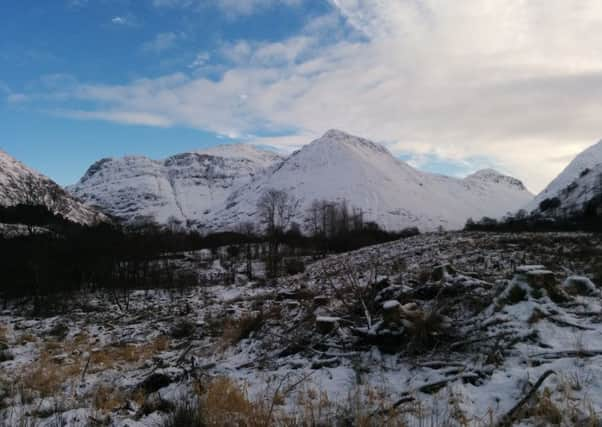Did this ruined house play a role in the Glencoe massacre?


Archaeologists from the National Trust for Scotland will carry out a survey of the remains of the building that may have links to the Massacre of Glencoe next week.
The archaeologists will examine the remnants of the house, which is thought to date from the 17th century, just a few days after the 324th anniversary of the chilling events of 13 February 1692, when 38 MacDonalds were killed on the orders of the government.
Advertisement
Hide AdAdvertisement
Hide AdThe turf house was found at Achtriochtan, near the loch, during a routine inspection of other archaeological sites in the area.
The remains are quite difficult to see as all that survives is a low, spread, earthen bank defining the roughly rectangular outline of a building.
Derek Alexander, the trust’s head of archaeology, said: “We were very excited to discover these remains.
“Most of the archaeological sites in the glen are stone-built structures, likely to date to after the agricultural changes of the mid-18th or 19th century.
“Prior to then, most buildings would have been built of turf, perhaps with one or two stones included in the base of the wall.
“It is impossible to provide a precise date for the Achtriochtan structure from their surface remains alone but by carrying out a detailed drawing of the site and undertaking a comprehensive photographic record we will provide a basis for any future research.”
The conservation charity has owned the site, along with large areas across Glencoe and Dalness since the 1930s.
Advertisement
Hide AdAdvertisement
Hide AdThe most famous Scottish glen is also one of its most dramatic, with forbidding mountains, thundering waterfalls and sparkling lochs.
Internationally famous for its amazing landscape, its natural and cultural heritage; the scenery of Glencoe has been fashioned by millions of years of geological and geomorphologic processes is now regarded as some of the finest ‘wild’ landscape in Scotland.
The drama is also reflected in Glencoe’s history, both real and imagined – myths, massacre and movies are all now part of the fabric of this magical, mysterious place.
Walkers and climbers are drawn from all over the world to tackle its many mountaineering routes, including eight Munros, while animal-lovers come to catch a glimpse of Scottish wildlife including red deer, golden eagles and pine martens.
The Glencoe Massacre followed a proclamation issued in August 1691, which required all the chiefs of the Scottish clans to take an oath of allegiance to the new king, William of Orange, before the end of the year.
He had been determined to bring the often unruly Highland clans into line and offered a pardon in an attempt to do so.
But many clan chiefs were waiting until word had come from the exiled King James before they took the oath.
Advertisement
Hide AdAdvertisement
Hide AdJohn Dalrymple, secretary of state for Scotland, the king’s representative north of the Border, was looking for an excuse to make an example of one of the clans.
Alasdair MacDonald (or MacIain), the clan’s chief, arrived at Fort William on 31 December, 1691 to take the oath but was told that he would have to travel some 70 miles to see a sheriff at Inveraray, in Argyll.
MacIain finally took the oath on 6 January, 1692 and was given assurances that his people were safe.
Under a plot hatched by Dalrymple, about 120 troops arrived at Glencoe on 2 February under the command of Captain Robert Campbell of Glen Lyon. They were given hospitality by the MacDonalds, as was customary in the Highlands.
Then Captain Campbell received orders from his superior, Major Duncanson, instructing him to “fall upon the rebels, the MacDonalds of Glencoe, and put all to the sword under seventy.”
Read more: http://www.scotsman.com/heritage/people-places/massacre-of-glencoe-remembered-in-national-library-1-3629232#ixzz3zx3OM6Wk
